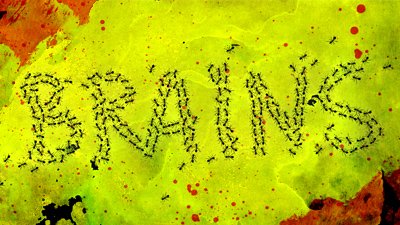
God’s Design in Creation: Water Strider Legs and Leafhopper Eggs
Evidence of our Lord’s creativity and attention to detail can be seen throughout his creation, from the large to the very tiny, from the flashy to the drab. All you have to do is open your eyes and look. Here are two examples involving insects you’ve probably seen before but perhaps never thought much about: the water strider and the leafhopper.
My, What Beautiful Legs You Have
Water striders are a familiar sight on ponds and other bodies of water around the world. Belonging to the family Gerridae are 2,200 species of this insect that is commonly known by several names: water striders, water bugs, pond skaters, water skippers, or even Jesus bugs.1
Water striders “walk” (or, really, skate) across the surface of the water. They are able to do this because of water’s natural surface tension and because their long legs distribute their weight. These legs are covered with thousands of tiny hairs that shed water, keeping the strider dry, but, more importantly, keeping it from being bogged down with extra weight.
One genus, Rhagovelia, has a feathery “fan” on the middle pair of its six legs. Researchers have been fascinated by this fan and wondered about its purpose.2 It doesn’t help support larger adult water striders, as some might assume. There are many species that are much larger than the species in this genus. But a recent study suggests a purpose for these feathery fans.
When researchers removed or suppressed the genes that code for these fans, the striders “couldn’t turn as deftly or run upstream against the current as fully fanned Rhagovelia can. . . . The innovative fan opened up new territory, helping the insects navigate flowing water, the researchers conclude.” These feathery paddles serve a very useful function, allowing the insect to deftly move across the surface of flowing water.
These feathery paddles serve a very useful function, allowing the insect to deftly move across the surface of flowing water.
The lead author of the study claims these fans are “one of those examples of ‘key evolutionary innovations,’ traits that just ‘pop up’ in evolutionary history with no clear line of precursors or partial forms.” The fans develop because of three supposedly repurposed genes and two that appear to be unique to this genus.
Of course, these fans are not “evolutionary innovations.” These beautiful fans are found fully formed, with no intermediates, because the genes were designed by God to give fans from the beginning. Partial fans would be useless and perhaps even harmful to the organism. They need to be fully formed and work correctly to be useful. These evolutionary researchers are just trying to come up with a naturalistic explanation for the genetic origins of these fans.
In a biblical view, we recognize that God created the water strider genome, including the information to make these useful fans. It appears that the other genera (and the species in these genera) in the water strider kind may have lost the information to form these fans. The fans may have been selected against in certain organisms in certain environments (such as calm water).
Water striders, a kind that has survived and thrived in waters around the world, are examples of God’s handiwork and his meticulous design even in some of his smaller creations.
Extreme Camouflage
Leafhoppers are tiny insects that belong to the family Cicadellidae, the second largest true bug family with over 20,000 known species distributed around the world. And scientists just discovered something fascinating about leafhopper eggs.
Most leafhopper species produce microspheres called brochosomes. These tiny balls (five micrometers across; a micrometer is one-thousandth of a millimeter) are particles covered in honeycomb-like indentations. Leafhoppers rub these brochosomes all over their bodies to make themselves water repellant. But they also cover their eggs in brochosomes after laying them on young leaves, and, until now, no one knew why.
Engineers studying these brochosomes discovered that they “have the exact shape and size to prevent reflection of light in any direction.”3 When the eggs are covered in brochosomes, they appear similar to the leaf they are laid on when viewed in the spectrum of light visible to insects. It appears that this gives the eggs an antireflective property that camouflages them so potential predators can’t see them.
God’s attention to the smallest details is astounding!
God’s attention to the smallest details is astounding! These brochosomes, like so many other design features we observe, show that God has provided even for insects in our fallen world to help preserve them.
We are Without Excuse
The more scientists discover about God’s creation, the more we marvel at what he has made. Sadly, many scientists don’t give God the glory for what he designed. Instead they attribute these incredible features to evolution or Mother Nature. But Romans tells us that there is so much evidence for God in what he has made that those who willingly choose to reject him are without excuse (Romans 1:20). God’s glory can indeed be seen in what he has made—even in water strider legs and leafhopper eggs.
Footnotes
- Susan Milius, “Here’s Why Some Water Striders Have Fans on Their Legs,” Science News, November 3, 2017, https://www.sciencenews.org/article/water-striders-fans-legs-biophysics.
- Ibid.
- Viviane Callier, “Leafhoppers Use Tiny Light-Absorbing Balls to Conceal Their Eggs,” Science News, November 3, 2017, https://www.sciencenews.org/article/leafhoppers-use-tiny-light-absorbing-balls-conceal-their-eggs.
Recommended Resources

Answers in Genesis is an apologetics ministry, dedicated to helping Christians defend their faith and proclaim the good news of Jesus Christ.
- Customer Service 800.778.3390
- © 2024 Answers in Genesis




